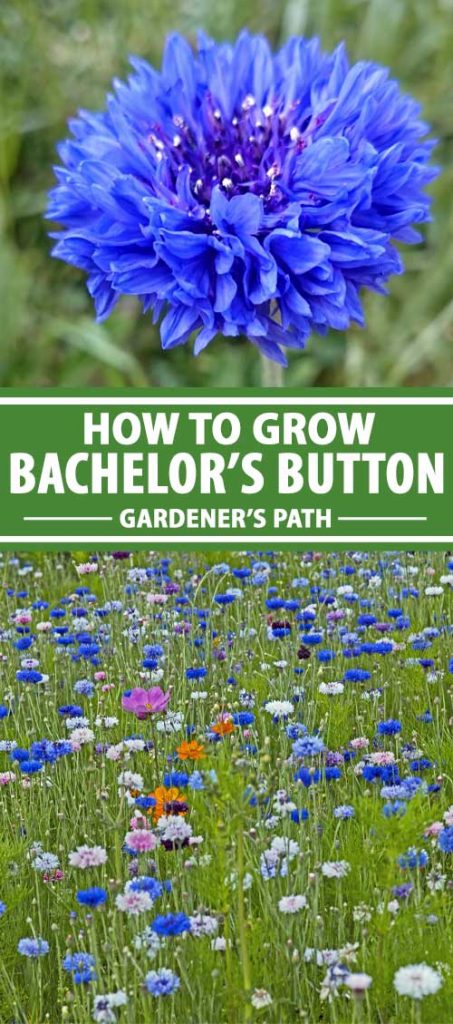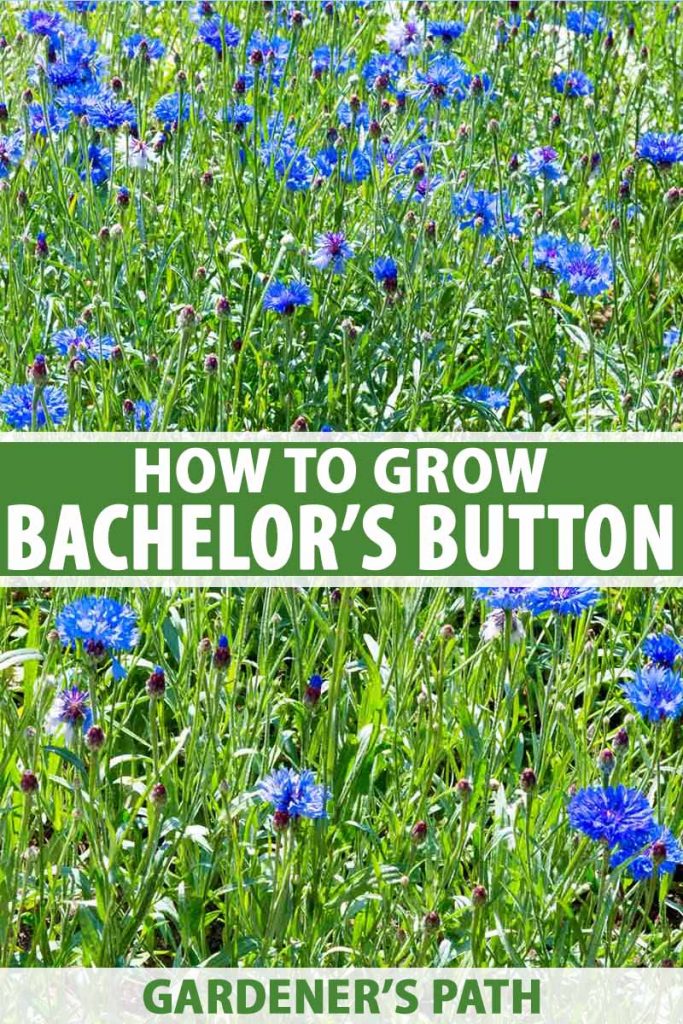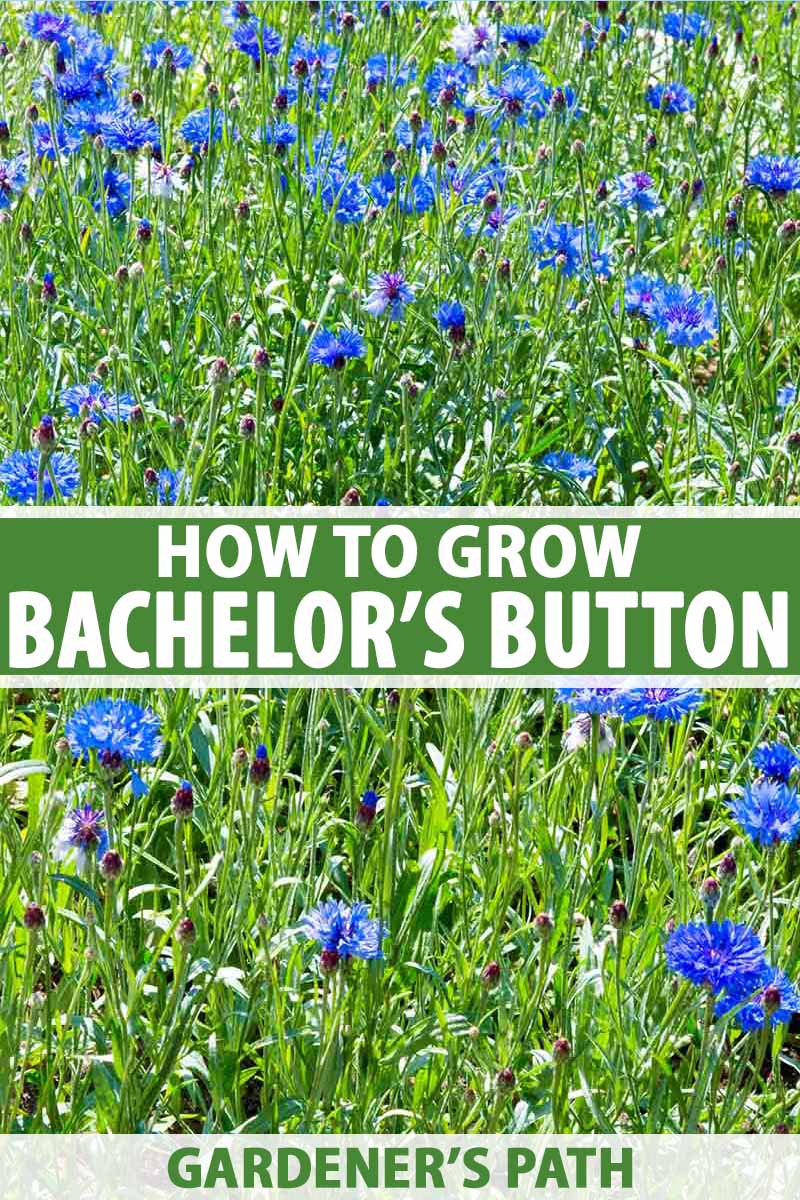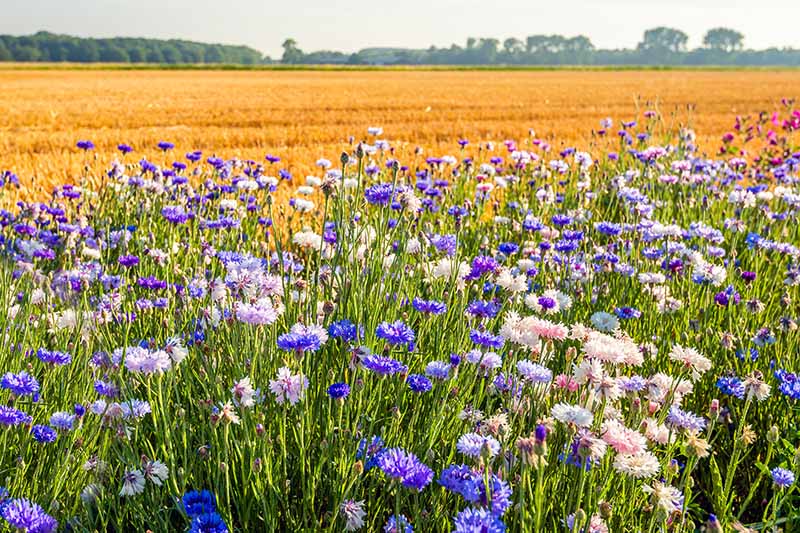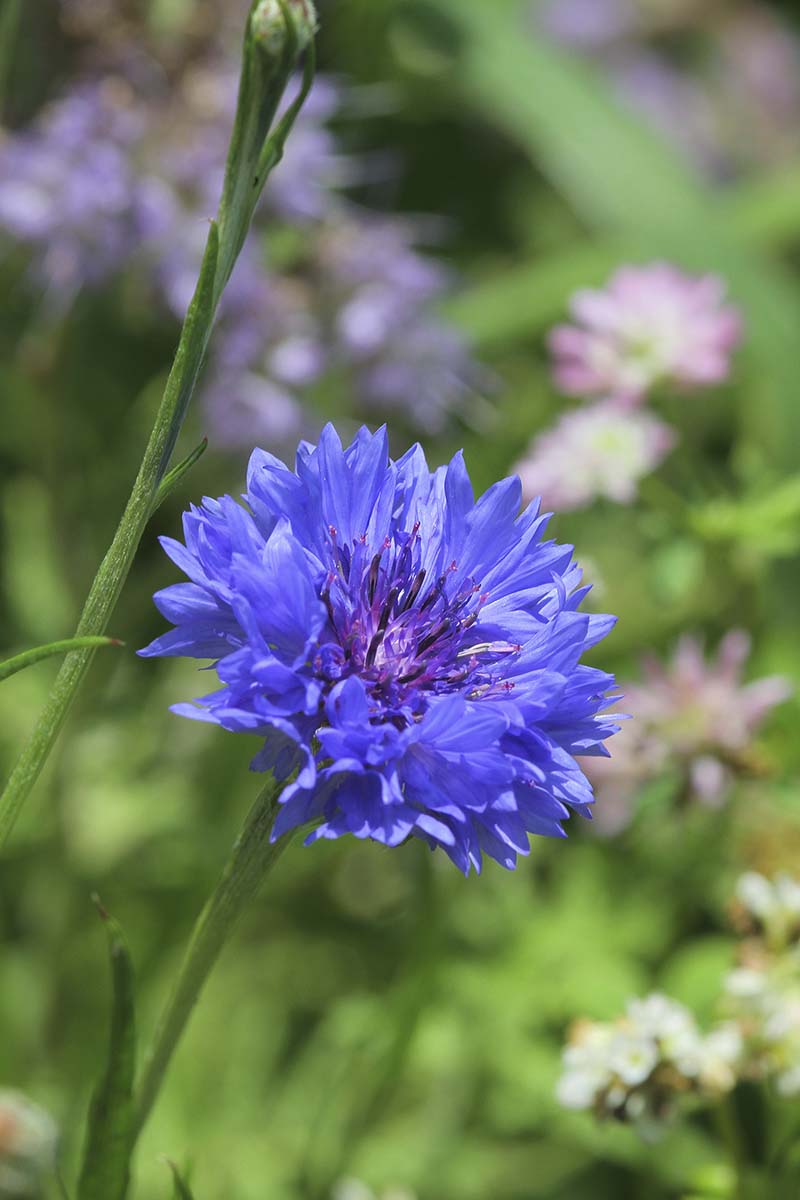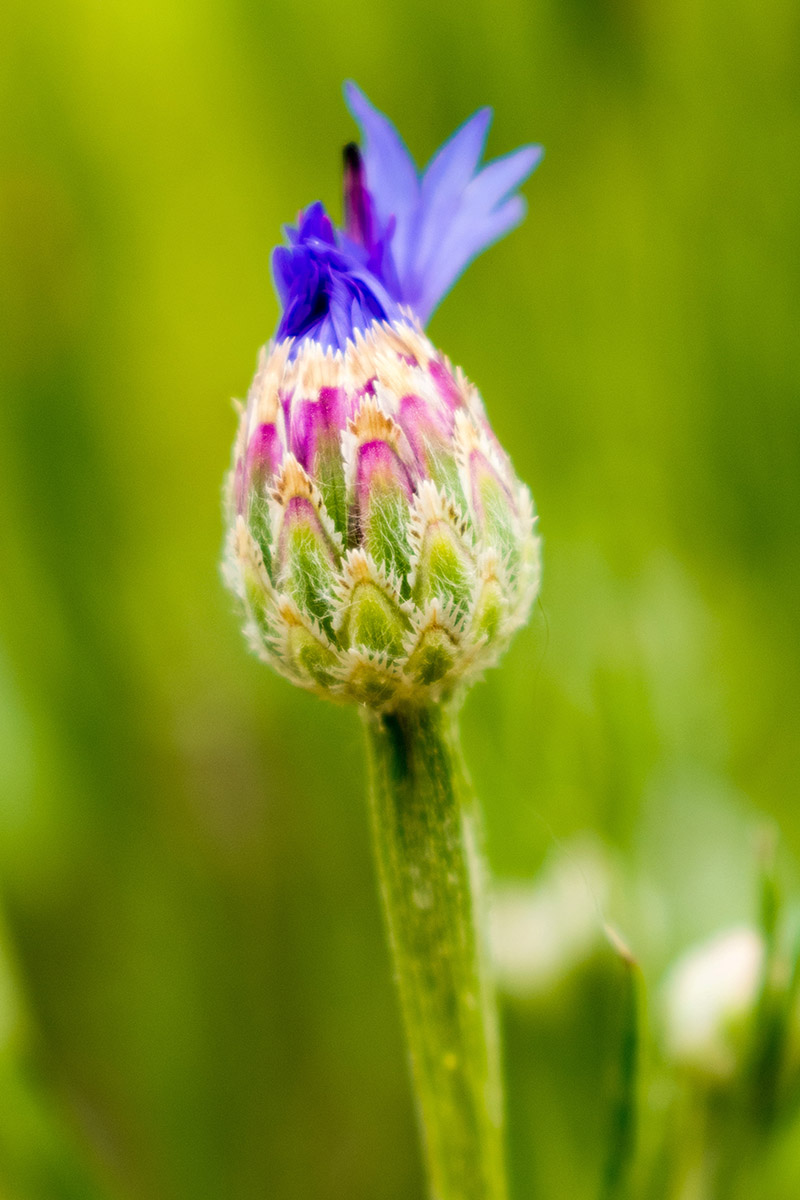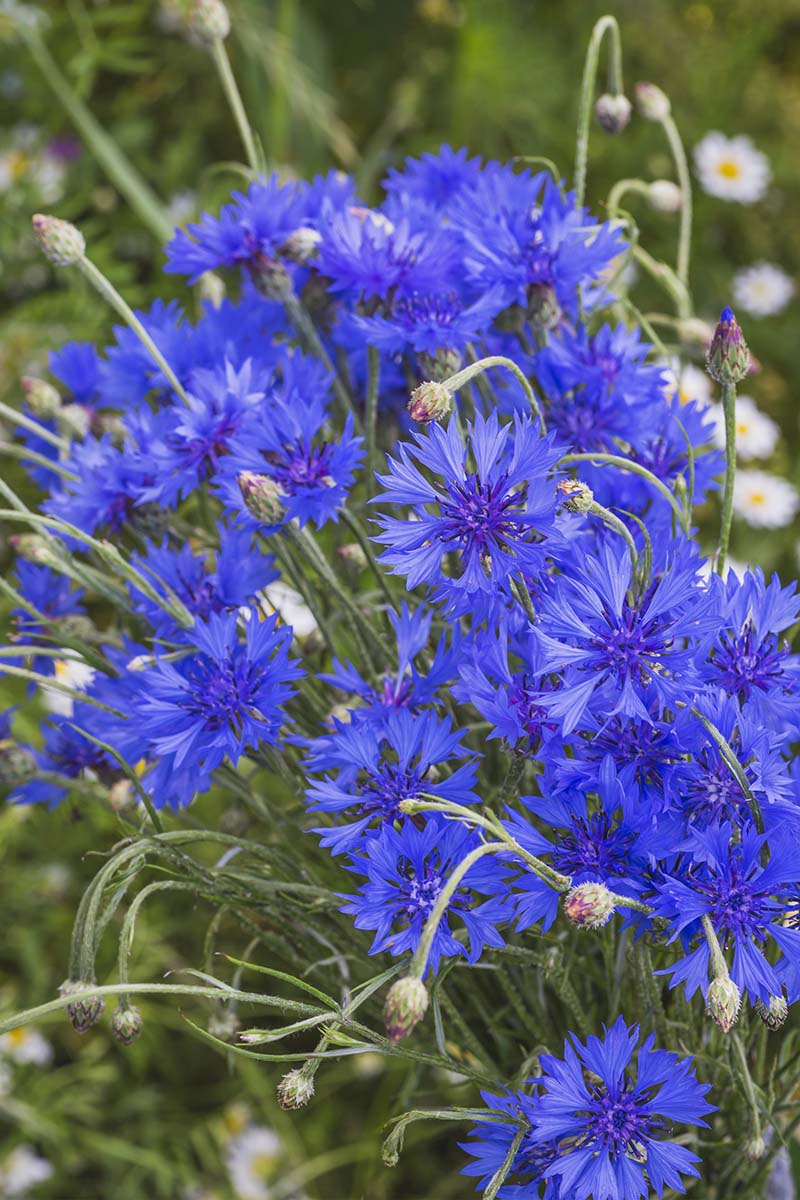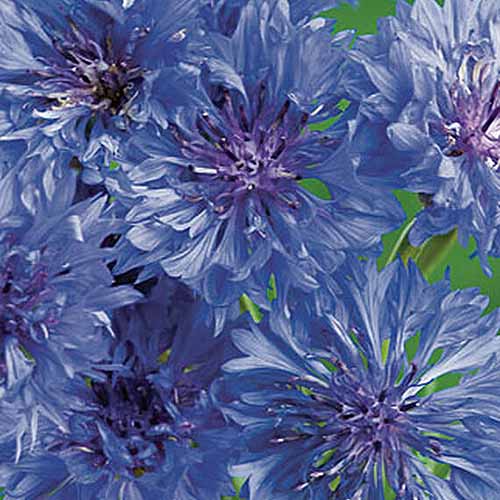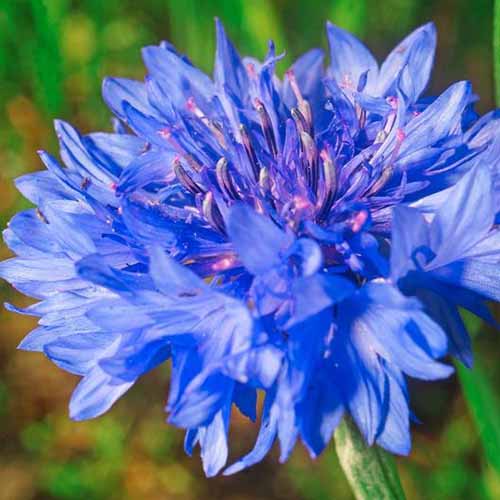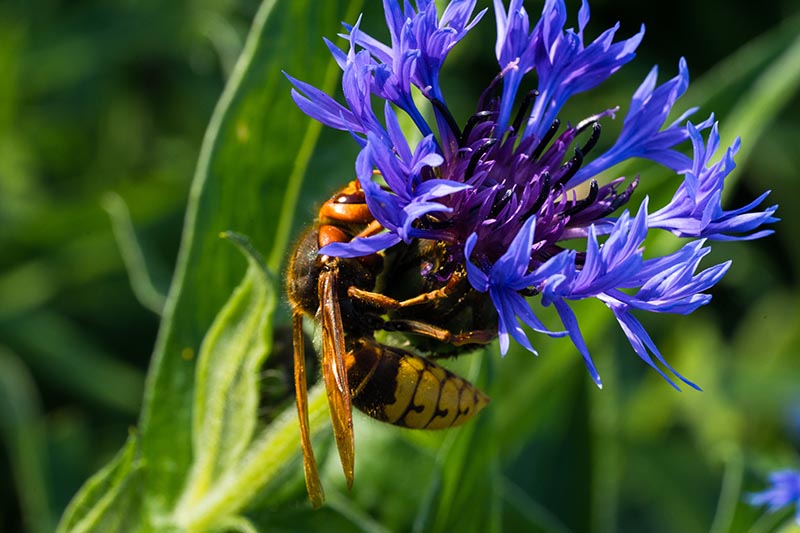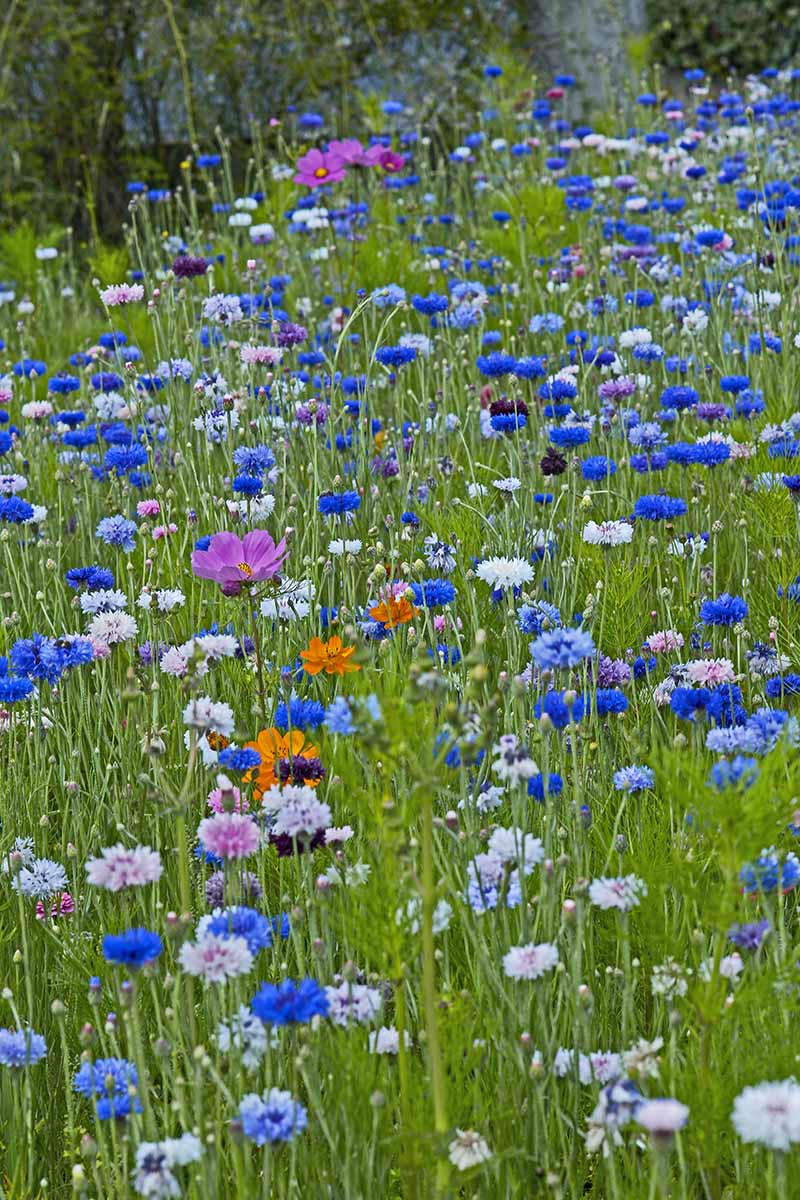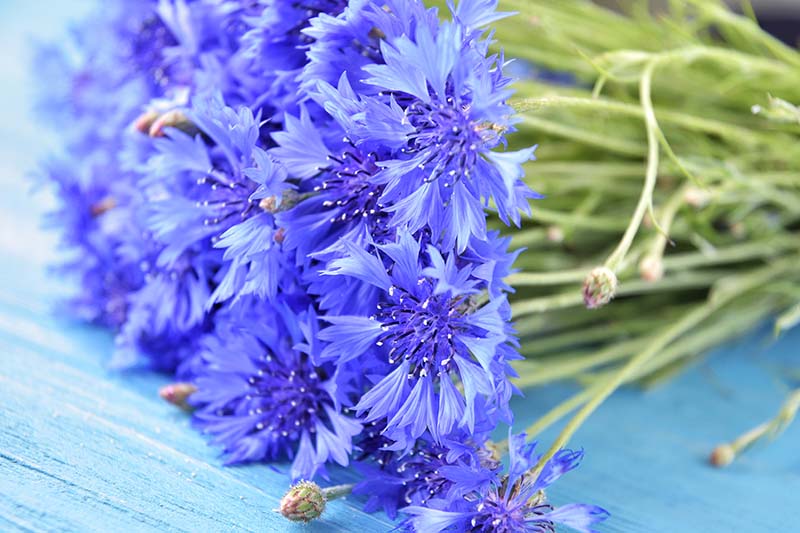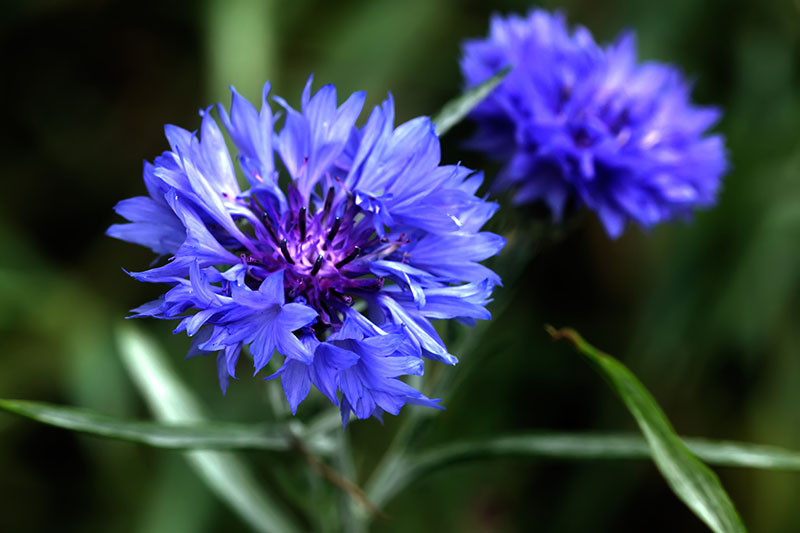It’s a vigorous plant commonly found growing among the grain crops in farmers’ fields. Also known as cornflower, its delicate blossoms have been charming country folks for generations. We link to vendors to help you find relevant products. If you buy from one of our links, we may earn a commission. Currently on the USDA’s list of Introduced, Invasive, and Noxious Plants, this plant is prohibited in North Carolina. It is also classified as invasive in Tennessee, Georgia, and Maryland, and is gradually making its way into the prairie lands of the northwestern United States. In this article, you will learn how to cultivate bachelor’s button in your garden. Here’s what’s in store: Let’s find out if this dynamic plant is right for your outdoor living space!
Cultivation and History
One of several Centaurea cornflower varieties, but the only one commonly referred to as cornflower, C. cyanus is noted for its predominantly blue flowers. It is also available in shades of pink, purple, red, and white, as well as bicolor combinations.
This hardy, cool season annual is suited to cultivation in USDA Hardiness Zones 2 to 11. Because it self-sows on viable ground, it gives the impression of being a perennial, returning each year in all its glory. Mature heights range from one to three feet. Blooming begins anytime from late spring to early summer, and generally continues until the first frost. Sturdy grayish-green stalks and leaves support delicate, multi-petaled disks. Each measures approximately one inch across. This is a robust plant that’s so easy to grow, it’s recommended widely for gardening with children. In my area, there is a sunny field full of cornflowers.
Occasionally, the owner mows the property, and I’m always fascinated to see the flowers make a defiant, if stunted, comeback, blooming at ground level with almost no supporting stems. It’s likely that C. cyanus was a garden specimen before vigorous self-seeding led to its escape into the wild, and its universal appeal. Historically, the cornflower has been used as a symbol of fortitude, resilience, hope, and love. In Estonia and Germany, it has been adopted as a national flower. In France, it is a remembrance flower to commemorate victory and honor veterans. The ALS/MND Association chose the bold blue bachelor’s button as their national flower of hope. And the Corning Glass Company adorned their ground-breaking, oven-safe cookware, Corningware, with its familiar image. Many a heartsick young gentleman has worn a boutonniere of blue cornflower, believing that if it wilted, he would be the sad victim of unrequited love.
Propagation
This plant grows from seed sown directly into the garden. As it is a cool-weather hardy annual, there is no need to start seeds indoors. You may do so, but as plants do not take well to transplanting, it is not advised. In warmer regions, where the ground doesn’t freeze, you may sow seeds in the fall. In cooler areas that experience freezing temperatures, it’s best to plant in late winter or early spring, once the ground has thawed and become workable. Find more tips on planting from seed here.
How to Grow
Bachelor’s button requires a full sun location.
The soil pH can range from slightly acidic to slightly alkaline, or approximately 6.6 to 7.5. It can be sandy, loamy, or even clay-like, provided it drains well. Poor drainage may lead to fungal infection. You may conduct a soil test to determine the specific characteristics of the earth in your garden. You can mix some compost or builder’s sand into the soil to improve drainage as needed. Compost may increase the acidity. To sweeten soil that is too acidic, add some lime. Work the soil to a crumbly consistency, to a depth of six to 10 inches. Sow seeds several inches apart, a quarter-inch deep. Cover the seeds with soil, as they need darkness to germinate. Water gently, but thoroughly, and maintain even moisture during germination. When the seedlings have several sets of true leaves, thin them to accommodate the mature widths of one to two feet. Fertilizer is optional. Apply a well-balanced, slow-release product in early spring if desired. Established plants tolerate drought well, and require little, if any, supplemental water.
Growing Tips
Cover seeds with one-half inch of soil. They need darkness to germinate. Sow seeds directly into the garden or container to avoid transplanting, as plants don’t take well to being moved. Plant in soil that drains well to inhibit fungal infection. Keep the soil evenly moist during germination, but don’t water established plants unless the weather is especially dry. If find that your flowers are falling over, consult our guide here for fixes.
Pruning and Maintenance
This is a low-maintenance plant. Once established, barring an especially dry spell, it is self-sufficient.
Weed regularly to maintain adequate airflow between plants, and inhibit fungal growth and insect infestation. Add a layer of mulch to aid in water retention and weed control. If the spreading of plants is a concern, deadhead spent flowers as they finish blooming, to limit self-seeding. You may also mow down the entire garden before flowers set seed. Just make sure to clear away the cuttings before they dry out! On the other hand, if you’re a fan of spreading cornflowers, save the seeds per the instructions below, to plant next season or share with friends. Taller varieties may benefit from staking to keep leggy plants from looking weedy.
Managing Pests and Disease
This annual plant is not especially prone to bother from insects or disease. Occasionally, aphids, leafhoppers, or mealybugs may attempt to take up residence for the purpose of sap sucking.
Cultivars to Select
The blue bachelor’s button makes a striking statement in the garden. Here are three noteworthy cultivars to consider:
Blue Boy
This type has bright blue flowers that measure one to one and one-half inches across.
‘Blue Boy’ Plants top out at 30 to 36 inches tall. Find 150 seeds available at Burpee.
Cornflower Mix
This mixed variety offers shades of blue, pink, purple, and white. Flowers measure one-inch across.
Cornflower Mix Mature heights reach 18 to 24 inches. Find seeds in a variety of packet sizes available from True Leaf Market.
Dwarf Blue
This variety has bright blue flowers that measure one to one and a quarter inches across.
‘Dwarf Blue’ Plant heights range from 18 to 24 inches at maturity. Find ‘Dwarf Blue’ seeds in a variety of packet sizes available from Eden Brothers.
However, as C. cyanus attracts beneficial insects, such as lacewings, ladybugs, and parasitic wasps that feed on the aforementioned pests, they are unlikely to pose much of a problem. As for disease, while plants prefer soil that is consistently moist, allowing it to become oversaturated may invite fungal disease, such as powdery mildew, root rot, rust, stem rot, and wilting. There are fungicidal treatments for these conditions. With due diligence in the form of well-draining soil, not overwatering, and weeding around plants for optimal airflow, fungal issues are less likely to present themselves.
Best Garden Uses
One person’s favorite blue wildflower may be another person’s invasive weed, so if you decide to try this plant in your garden, start small.
A container with a diameter of at least 24 inches and a depth of at least 12 inches affords the opportunity to get a feel for the vigor of C. cyanus. Place the pot away from fertile ground to inhibit self-sowing, and deadhead spent blooms before they run to seed. You may also dedicate a planting area and deadhead throughout the growing season, for controlled garden growing. If you have the space and desire for naturalization, placement ideas include cutting gardens, drifts, meadows, and mixed beds and borders.
As a plant that requires little to no supplemental water once established, C. cyanus is well-suited to xeriscaping. For companion plants with similar cultural requirements, consider bee balm, black-eyed Susan, coneflower, daisy, phlox, snapdragon, and summer snapdragon (Angelonia). This is an excellent flower for attracting a host of nectar-lovers like bees, beneficial insects, butterflies, hummingbirds, and moths, as well as seed-foraging birds.
Harvesting
You can harvest fresh C. cyanus for a variety of uses, including: fresh floral arrangements, everlasting floral arrangements, seed saving, and culinary use.
Fresh Floral Arrangements
Choose stems that range from bud stage to half open for the longest vase life.
When you change the water and give the stems a fresh trim each day, they last up to two weeks. Learn how to make your own fresh cut flower food in this guide. You may also gather fresh stems to dry for everlasting arrangements.
Everlasting Floral Arrangements
Select flowers that are about three quarters of the way open. Cut the stems to the desired length. Bunch the stems with twine, like a bouquet. Suspend the bouquet upside down in a dry, well-ventilated location for several weeks, or until the flowers and foliage feel dry to the touch. You may use entire stems for decorative purposes, or you may detach the dry petals to store in airtight jars for culinary use. They should remain fresh for up to one year. In addition, you may gather stems that have finished blooming and are just beginning to wither for the purpose of seed saving.
Seed Saving
Cut stems with spent flowers that are turning brown and brittle. Bunch and bind them with twine, like they were bouquets. Suspend them upside down over a clean cloth or paper bag in a dry, well-ventilated location. Allow the stems to dry completely for several weeks. When they are crisp to the touch, rub the base of each flower between your fingers to release the seeds. Separate the seeds from the chaff. Store the seeds in airtight jars to sow during the next growing season. Read our complete guide on saving bachelor’s button seed for more information.
Culinary Use
As they are edible, the harvested flowers may be used in the kitchen, as well. The sweet and spicy flavor of C. cyanus flowers falls somewhere between cloves and black pepper, with field green undertones.
Wash all flowers thoroughly before consuming. The addition of a fresh flower head or two to a serving platter or dinner plate takes ordinary to elegant in a heartbeat. Simply snip the flower heads off just before they are needed. Those that aren’t quite fully open hold up the best. You may also separate individual petals to sprinkle over cold dishes. And don’t forget those fresh-dried petals. They may be brewed like tea, or added to potpourri and sachet blends.
Quick Reference Growing Guide
Robust and True Blue
Bachelor’s button is one of those plants I grew up thinking was native to my region. It always appeared, as if by magic, in fields and beside country roads every year. Try as we might, efforts to transplant one to the family garden were all in vain. Finally, one sprouted from a package of mixed wildflower seeds, and it was the sensation of the summer.
If cornflowers make you wax nostalgic, or you just can’t resist the lure of azure blue, give them a small patch of their own, or add a few to a mixed bed, and – cautiously – give them a try! Are you familiar with bachelor’s button? Do you consider it invasive or inviting? Let us know in the comments section below. If you are interested in reading about more edible flowering summer annuals, you’ll enjoy these guides next:
15 of the Best Nasturtium Varieties 39 of the Best Violet Varieties How to Grow and Care for Dianthus Flowers
© Ask the Experts, LLC. ALL RIGHTS RESERVED. See our TOS for more details. Originally published March 3, 2019. Last updated June 21, 2020. Product phots via Burpee, Eden Brothers, and True Leaf Market. Uncredited photos: Shutterstock.
